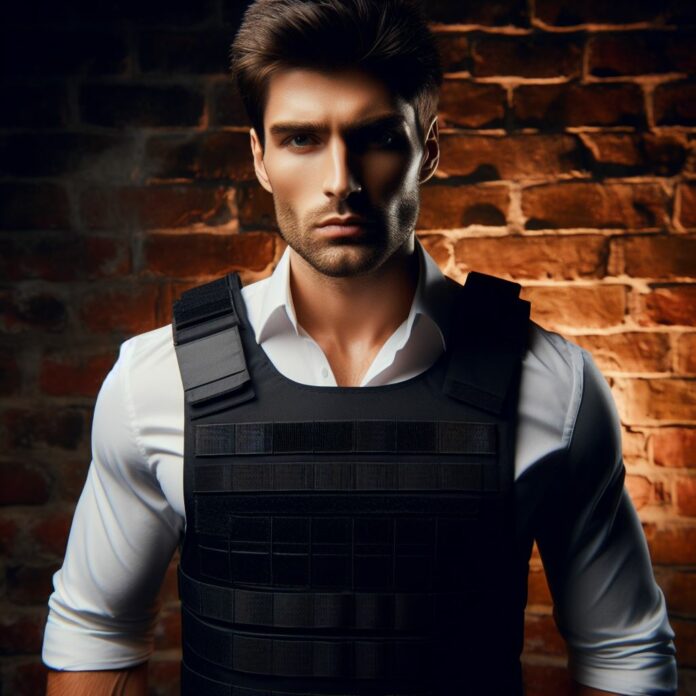Bulletproof vests play a crucial role in providing protection to individuals in high-risk situations. However, not all bulletproof vests are created equal, and it is essential to ensure that you are investing in a certified and reliable product.
Bulletproof vest certification serves as a guarantee that the vest meets specific industry standards and has undergone rigorous testing to ensure its effectiveness.
It signifies that the vest has passed various tests and is capable of preventing penetration from bullets or other types of projectiles.
Ensuring that your bulletproof vest has the appropriate certification is of utmost importance for your safety and peace of mind.
A certified vest has been tested and proven to offer reliable protection, giving you confidence in its quality and performance during critical situations. There are several factors to consider when evaluating a bulletproof vest certification.
These include the protection level, compliance with standards, ballistic material used, durability and longevity, comfort and fit, weight and mobility, maintenance and cleaning requirements, warranty, customer support, and price.
Common bulletproof vest certifications include the NIJ Certification, which is widely recognized and trusted in the United States, the HOSDB Certification used in the UK, the VPAM Certification used in Europe, the ISO Certification representing international standards, and the SAPI Certification specifically designed for military use.
Verifying the certification of a bulletproof vest is essential to ensure its authenticity. This can be done by checking the product label, serial numbers, or contacting the certifying body directly for verification.
By understanding what to look for in a bulletproof vest certification, you can make an informed decision when purchasing a vest that meets your specific protection needs.
Remember that investing in the right certified bulletproof vest is crucial for your personal safety and security.
What is a Bulletproof Vest Certification?
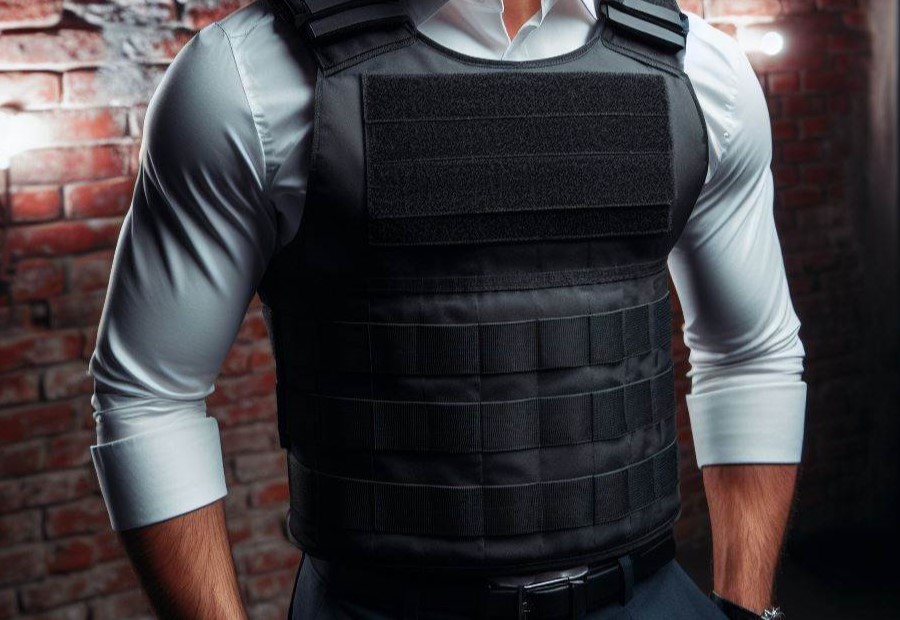
A bulletproof vest certification is essentially a document or accreditation that serves to verify the performance and quality of a bulletproof vest.
It acts as concrete proof that a specific vest has undergone rigorous testing and meets the specific standards mandated by regulatory bodies or organizations.
These certifications play a crucial role in ensuring that the vest offers dependable protection against projectiles and complies with the essential safety requirements.
Essentially, they guarantee that the vest has successfully met certain criteria, including stopping power, durability, and overall performance.
To demonstrate the effectiveness and reliability of their products, manufacturers often seek certifications from independent testing agencies.
To ensure that they are investing in reliable and effective protective equipment, consumers should prioritize purchasing vests that possess valid certifications from recognized authorities.
Why is Bulletproof Vest Certification Important?
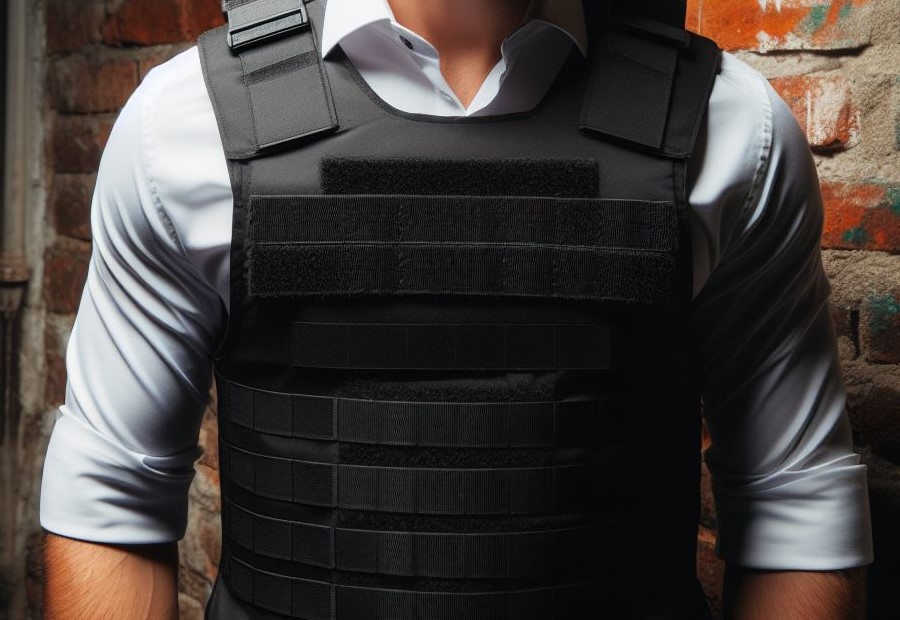
Bulletproof vest certification is crucial because it ensures the reliability and effectiveness of the vests. Certification guarantees that the vests meet specific standards for protecting against bullets and other lethal threats.
Certifications demonstrate the ability of the vests to withstand different levels of impact and penetration, providing factual proof that the vests are capable of saving lives.
Certification ensures that the vests have a high level of bullet resistance, often exceeding 95%.
It enhances the confidence of wearers in the vests’ ability to protect them and cultivates proficiency among law enforcement and military personnel when using the vests in dangerous situations.
Bulletproof vest certification is important in ensuring the safety and well-being of wearers.
Factors to Consider in a Bulletproof Vest Certification
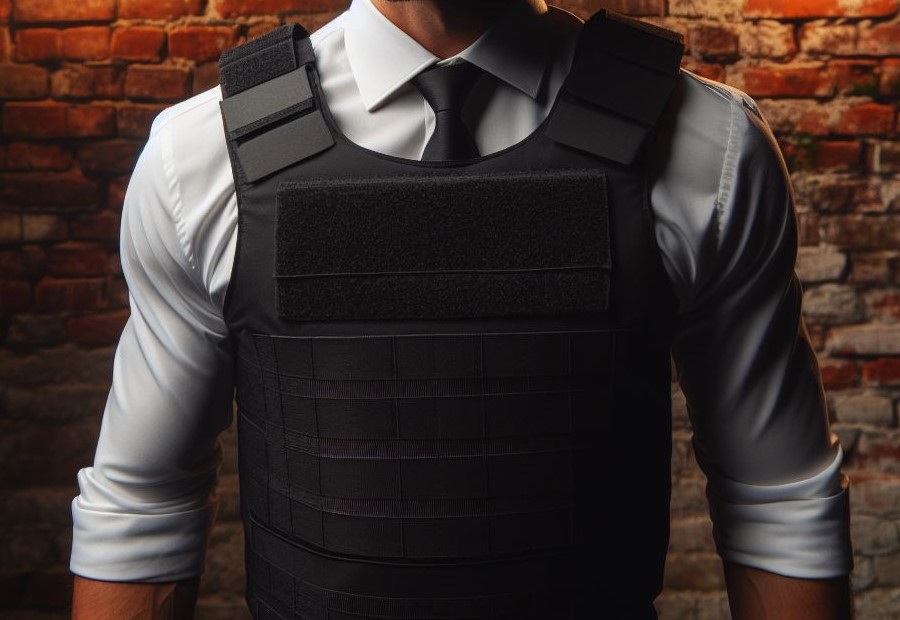
Protection Level
The sub-topic “Protection Level” plays a crucial role when it comes to choosing a bulletproof vest. The protection level determines the vest’s capacity to withstand different types of threats.
| Protection Level | Description |
| Level I | Provides defense against low-velocity handgun rounds such as .22LR and 9mm. |
| Level II | Ensures protection against higher-velocity handgun rounds like .357 Magnum and .40 S&W. |
| Level IIIA | Offers safety against powerful handgun rounds like .44 Magnum and .357 SIG, as well as some lower-velocity rifle rounds. |
| Level III | Provides defense against most rifle rounds, including 7.62x39mm and .308 Winchester. |
| Level IV | Offers maximum protection against armor-piercing rifle rounds like .30-06 M2 AP and 7.62x63mm AP. |
Choosing the suitable protection level depends on your specific requirements and the potential threats you may face.
Take into account factors such as the environment, the types of firearms commonly used in your area, and the level of protection necessary for your profession or activities.
When selecting a bulletproof vest, always choose a certified product that meets recognized industry standards.
Verify the certification and ensure it aligns with your desired protection level. Remember, the protection level is a critical factor in ensuring your safety and security.
Consider seeking advice from experts or professionals in the field to receive personalized guidance based on your specific needs. Ultimately, investing in a high-quality bulletproof vest with the appropriate protection level will provide you with the utmost defense.
Compliance with Standards
Compliance with standards is a crucial factor to consider when choosing a bulletproof vest. It ensures that the vest meets the necessary requirements for performance and safety. Here is a table highlighting the significance of compliance with standards:
| Compliance with Standards | Importance |
| Adherence to NIJ Certification | Ensures the vest has been tested and meets the standards set by the National Institute of Justice. |
| Alignment with HOSDB Certification | Indicates that the vest complies with standards set by the UK Home Office Scientific Development Branch. |
| Conformity to VPAM Certification | Shows that the vest has been certified by the German Police’s Ballistic Testing Center. |
| Compliance with ISO Certification | Demonstrates that the vest meets the International Organization for Standardization’s requirements. |
| SAPI Certification | Ensures the vest can accommodate Small Arms Protective Inserts, providing additional protection. |
When considering compliance with standards, it is important to verify the certification through official documentation or reputable sources.
Look for specific details regarding the certification, such as the standard number, testing methods, and certification body. This information will help you determine if the vest meets the necessary safety and performance standards.
Make sure to carefully evaluate compliance with standards alongside other factors when selecting a bulletproof vest. This will ensure that you choose a vest that provides the level of protection and quality you require.
Ballistic Material
The choice of ballistic material is crucial when selecting a bulletproof vest for protection. Different materials offer varying levels of protection and performance. Refer to the table below for information on common ballistic materials and their characteristics:
| Ballistic Material | Description |
| Aramid Fibers | Lightweight, flexible, and resistant to heat and chemicals. Aramid fibers, such as Kevlar, provide excellent protection against most handgun rounds. |
| Ultra-High-Molecular-Weight Polyethylene | Extremely strong and lightweight, ultra-high-molecular-weight polyethylene (e.g. Dyneema) offers exceptional protection against rifle rounds. It is commonly utilized in military-grade vests. |
| Ceramic Plates | Hard ceramic materials like alumina or boron carbide. Ceramic plates are used alongside soft armor to provide added protection against high-velocity rifle rounds. |
| Composite Materials | Composite materials combine various components, such as aramid fibers and ceramics, to offer a balanced approach. They provide flexibility, weight management, and protection for different threat levels. |
When selecting a bulletproof vest, it is essential to consider the level of protection required based on potential threats.
Evaluate the weight and flexibility of the ballistic material, as these factors can impact comfort and mobility. Additionally, consider the material’s lifespan and durability over time.
Ensure the chosen vest meets applicable ballistic standards and possesses appropriate certification.
By gaining an understanding of the available ballistic materials, you can make an informed decision and select a bulletproof vest that best suits your safety needs. Prioritize safety and stay protected!
Please note that the information in the table serves for illustrative purposes and may not encompass all ballistic material options. It is always advisable to consult reliable sources and manufacturers for accurate and up-to-date information on ballistic materials.
Durability and Longevity
When considering a bulletproof vest certification, durability and longevity are crucial factors to take into account.
- When looking for a reliable bulletproof vest, it’s important to prioritize durability and longevity. Choose vests made from high-quality materials like Kevlar or Dyneema, which are well-known for their durability in providing ballistic protection.
- The lifespan of a bulletproof vest is an important consideration. Make sure to select a vest that can maintain its ballistic performance for an extended period. Look for certifications like the National Institute of Justice (NIJ) certification, which guarantees long-term effectiveness through rigorous testing and inspection.
- Material quality plays a significant role in the durability and longevity of a vest. Consider vests that utilize multiple layers of high-performance fibers to enhance protection against bullets. These materials should also possess excellent resistance to moisture, UV radiation, and other environmental factors that can degrade the vest over time.
- Pay close attention to the stitching and overall construction of the vest. Reinforced stitching and additional reinforcement panels contribute to the vest’s durability and ensure its integrity under various conditions.
- Proper care and maintenance can greatly extend the lifespan of a bulletproof vest. Opt for vests that come with guidelines for cleaning and storage, as following these instructions helps preserve the vest’s durability and effectiveness over time.
Comfort and Fit
When considering the comfort and fit of a bulletproof vest, several important factors should be taken into account:
- Weight: The weight of the vest plays a significant role in the overall comfort. A lighter vest will be less burdensome, especially during extended periods of wear.
- Adjustability: An adjustable vest allows for a personalized fit, ensuring optimal comfort and mobility. Straps and Velcro closures are common features that enable adjustments.
- Flexibility: The vest should provide flexibility to allow for ease of movement and comfort. Restrictions in movement can cause discomfort and hinder performance.
- Padding: Consider the presence of padding in key areas such as the shoulders and torso. Adequate padding can enhance comfort and alleviate pressure points.
- Breathability: Vests with breathable materials and ventilation channels allow air circulation, preventing heat buildup and sweat accumulation, enhancing overall comfort.
- Ergonomic design: A well-designed vest takes into account the natural contours of the body, offering a better fit and increased comfort. It should conform to the body’s shape without restricting movement.
By considering these factors, you can ensure that the bulletproof vest you choose provides both optimal comfort and a proper fit, crucial for its effectiveness and long-term wearability.
Weight and Mobility
When considering a bulletproof vest, weight and mobility are two important factors to take into account.
- Weight: The weight of a bulletproof vest can have a significant impact on the wearer. It is crucial to look for vests that are lightweight, ensuring comfort and ease of movement during use. A heavy vest can be burdensome and restrict mobility.
- Mobility: The level of mobility provided by a bulletproof vest is essential. It should not hinder agility or limit the range of motion. Opting for vests that are designed with flexible materials and strategic panel placement is a wise choice as they allow for unrestricted movement.
It’s a fact that the weight of bulletproof vests can vary considerably depending on the materials employed. Some modern vests can weigh as little as 5 pounds, offering excellent protection without compromising mobility.
Maintenance and Cleaning
When it comes to maintaining and cleaning a bulletproof vest, these are the crucial aspects to keep in mind:
- Follow manufacturer guidelines: It is imperative to carefully read and follow the maintenance and cleaning instructions provided by the manufacturer. These guidelines will guarantee that the vest remains in optimal condition and continues to provide the necessary protection.
- Regular inspections: Regularly inspect the vest for any signs of damage, wear, or loose threads. If any issues are found, contact the manufacturer or a professional to assess and repair the vest.
- Gentle cleaning: When cleaning the vest, use mild detergents and avoid harsh chemicals or bleach. Gently hand wash the vest in lukewarm water, paying close attention to any areas that may have been exposed to sweat or other contaminants.
- Air drying: After cleaning, allow the vest to air dry thoroughly before storing or wearing. Avoid using a dryer or exposing the vest to direct sunlight, as this can damage the protective materials.
- Storage: Store the bulletproof vest in a cool, dry place away from direct sunlight, chemicals, and extreme temperatures. Consider using a specially designed storage bag to protect the vest from dust and other particles.
- Regular maintenance: In addition to maintenance and cleaning, routine practices may involve replacing worn-out parts, checking and adjusting straps, and ensuring the overall integrity of the vest.
By adhering to these maintenance and cleaning practices, you can help ensure that your bulletproof vest remains in top condition and continues to provide the necessary protection.
Warranty and Customer Support
When choosing a bulletproof vest, it is important to give careful consideration to the warranty and customer support.
The presence of a good warranty can provide you with peace of mind, ensuring that you are safeguarded against any manufacturing defects or issues that may arise with the vest.
It is recommended to look for a warranty period that offers sufficient coverage to meet your needs.
Moreover, reliable and responsive customer support is crucial in case you have any inquiries or concerns regarding the product.
Having prompt and helpful customer support can significantly enhance your experience and provide you with assistance if you come across any problems with the vest.
To make an informed decision, it is crucial that you thoroughly inspect the warranty terms and conditions provided by the manufacturer.
Pay close attention to details such as the duration of the warranty period, any limitations or exclusions, and the process for submitting a warranty claim.
Additionally, reading reviews or seeking recommendations from individuals who have prior experience with the brand or manufacturer can help assess their reputation concerning customer support.
Taking these factors into account will help ensure that you select a bulletproof vest that comes with a reliable warranty and excellent customer support.
Remember, when considering the warranty and customer support, a lengthier warranty period and positive customer feedback contribute to a greater sense of security and confidence in your purchase.
Prioritizing brands that demonstrate a commitment to their customers by offering comprehensive warranties and responsive support is highly recommended.
Price
The price of a bulletproof vest is an important factor to consider when making a purchase decision.
Below is a table that provides information on the price range of bulletproof vests:
| Price Range | Description |
| $200 – $500 | Entry-level vests suitable for low-risk environments. |
| $500 – $1000 | Mid-range vests with better protection and durability. |
| $1000 – $2000 | High-end vests designed for law enforcement and military use. |
| Over $2000 | Specialized vests with advanced features and customization options. |
It’s important to note that the price of a bulletproof vest is influenced by various factors such as the level of protection, ballistic material used, and the brand reputation.
While it can be tempting to opt for a cheaper option, it’s crucial to prioritize quality and ensure the vest meets the necessary certifications and standards.
Additionally, consider the warranty and customer support offered by the manufacturer, as it can impact the long-term value and cost-effectiveness of the vest.
Ultimately, finding a balance between price and quality is key in selecting the right bulletproof vest for your needs.
Common Bulletproof Vest Certifications
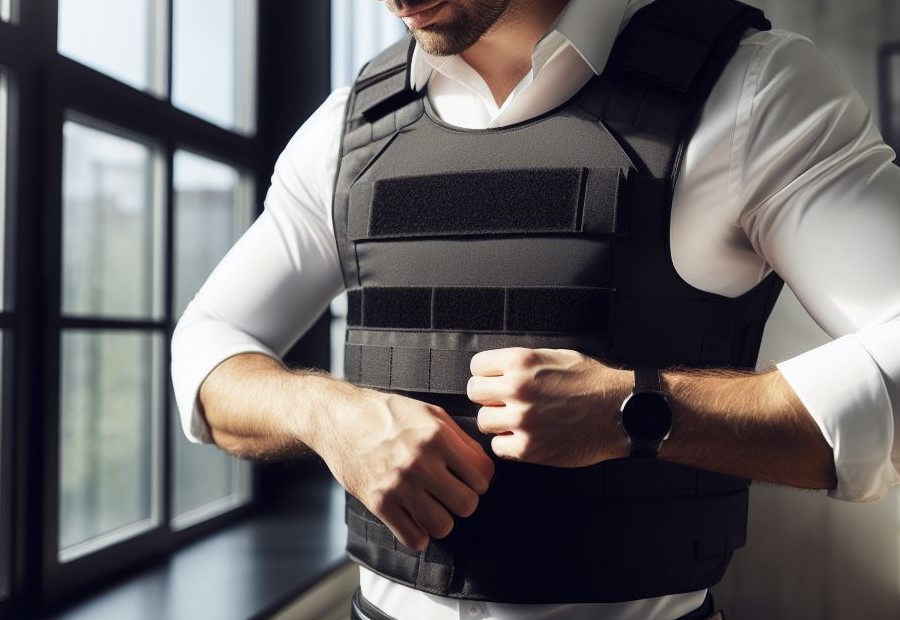
NIJ Certification
NIJ (National Institute of Justice) certification refers to the process by which a piece of law enforcement equipment, typically body armor, is tested and certified to meet certain standards set by the NIJ.
The NIJ is a research, development, and evaluation agency of the U.S. Department of Justice, and it establishes standards and testing protocols for various types of law enforcement equipment to ensure their effectiveness and reliability.
For body armor, NIJ certification involves rigorous testing to assess its ballistic resistance, stab resistance, and other performance characteristics.
Body armor that meets NIJ standards is designated with a specific level, such as NIJ Level II, Level IIIA, Level III, or Level IV, depending on its ability to stop certain types of ballistic threats.
Law enforcement agencies often rely on NIJ-certified body armor to provide protection for their officers in dangerous situations.
NIJ certification provides assurance that the body armor has undergone thorough testing and meets recognized standards for performance and reliability.
HOSDB Certification
HOSDB (Home Office Scientific Development Branch) certification for bulletproof vests, now referred to as CAST (Centre for Applied Science and Technology) certification, is a process by which bullet-resistant vests are tested and certified to meet specific standards set by the Home Office in the United Kingdom.
The certification process typically involves rigorous testing of the bulletproof vests to assess their ballistic resistance, stab resistance, and other relevant performance characteristics.
Vests that meet the standards set by the Home Office receive HOSDB/CAST certification, indicating that they provide a certain level of protection against ballistic threats and potentially other dangers faced by law enforcement and security personnel.
HOSDB/CAST certification provides assurance to law enforcement agencies, security professionals, and users that the bulletproof vests have undergone thorough testing and meet recognized standards for performance, reliability, and safety.
This certification mark helps agencies and individuals make informed decisions when selecting protective equipment for their personnel.
ISO Certification
An ISO certification ensures that a bulletproof vest meets international standards for quality and performance.
The guarantee of ISO certification establishes that the bulletproof vest has been thoroughly tested and inspected by a certified third-party organization.
Acquiring a bulletproof vest with ISO certification provides assurance that it offers reliable protection against various ballistic threats.
ISO certification ensures that the vest has been manufactured using high-quality materials and meets stringent durability standards.
Bulletproof vests with ISO certification undergo rigorous testing for resistance to wear and tear, ensuring long-lasting performance.
Comfort and fit are important aspects of an ISO certified bulletproof vest, ensuring ease of movement and optimal protection for the wearer.
Weight and mobility considerations are taken into account during the certification process to ensure that the vest allows for freedom of movement.
An ISO certified bulletproof vest is designed to be low-maintenance and easy to clean, allowing for hassle-free use.
Warranty and customer support are key features of an ISO certified vest, giving consumers the confidence that they are purchasing a reliable product with reliable support.
SAPI Certification
“SAPI” stands for Small Arms Protective Insert, which refers to a type of hard armor plate used in conjunction with soft body armor to provide enhanced ballistic protection against rifle rounds.
However, there isn’t a specific “SAPI certification” in the same way there are certifications like NIJ, HOSDB/Cast, or VPAM for soft body armor.
SAPI plates themselves are typically certified by various agencies or organizations depending on their jurisdiction. For instance:
- NIJ (National Institute of Justice): In the United States, NIJ sets standards for body armor, including both soft armor and hard armor plates like SAPI plates. Plates that meet NIJ standards for ballistic resistance may be referred to as NIJ-certified.
- Military Standards: SAPI plates are commonly used by military personnel, and they often adhere to specific military standards set by organizations like the U.S. Department of Defense or NATO.
- Manufacturer Testing and Certification: Many SAPI plates are also tested and certified by their manufacturers, who may use their own internal standards or have them independently tested by third-party laboratories.
In summary, while there isn’t a specific “SAPI certification” as such, SAPI plates are typically certified by various agencies or organizations based on established standards for ballistic protection.
How to Verify a Bulletproof Vest Certification?
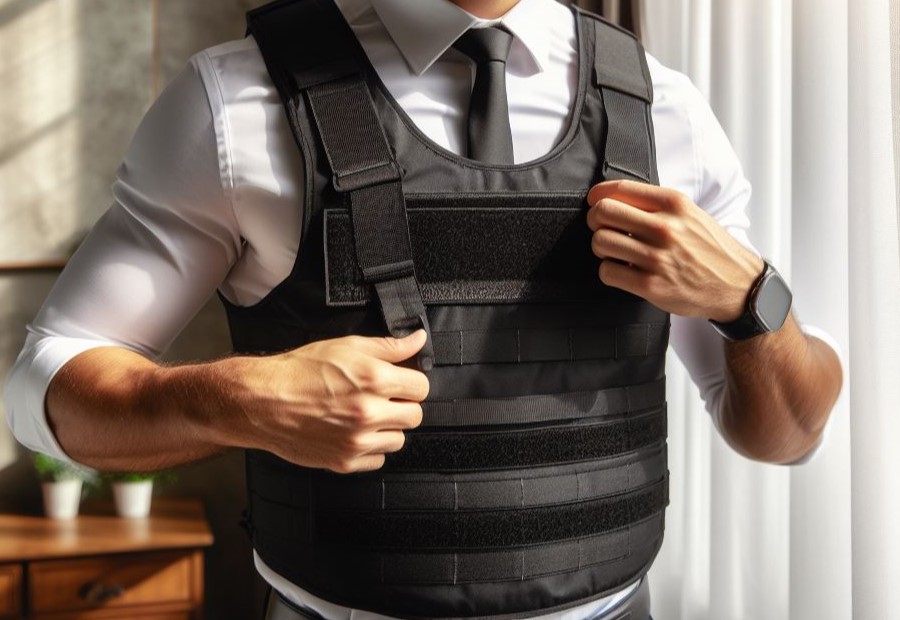
Are you wondering how to verify a bulletproof vest certification? Look no further, because we’ve got you covered with the step-by-step process:
- Check the label: It’s important to examine the vest and look for a label that clearly indicates it has been certified.
- Research the certification: Take the time to gather information about the certification body responsible for verifying the vest. Ensure that the certification body has a reputable and credible reputation.
- Examine the documentation: Thoroughly inspect the certification documents that come along with the vest. It’s essential to ensure the authenticity of these documents.
- Contact the certification body: Reach out directly to the certification body to validate the certification and confirm its validity.
- Consult with experts: Seek expert advice and guidance from professionals who specialize in bulletproof vests. Their expertise will provide valuable insight into the validity of the certification.
Frequently Asked Questions
What is NIJ certification, and why is it important?
NIJ certification is issued by the National Institute of Justice and indicates that a bulletproof vest meets specific standards for ballistic resistance.
It’s important because it ensures that the vest has undergone rigorous testing and offers reliable protection against various threats.
What are the different NIJ certification levels, and what do they mean?
NIJ certification levels range from Level IIA to Level IV, with each level offering different levels of protection against ballistic threats.
Level IIA provides the lowest level of protection, while Level IV offers the highest level of protection against armor-piercing rounds.
What materials are commonly used in bulletproof vests, and which are the most effective?
Common materials used in bulletproof vests include Kevlar, Dyneema, and Twaron. These materials are known for their high strength and ballistic resistance. The effectiveness of a vest depends on the quality and combination of materials used.
How important is the fit of a bulletproof vest?
The fit of a bulletproof vest is crucial for ensuring proper protection and comfort. A properly fitting vest should cover vital organs while allowing for mobility and flexibility.
It’s essential to choose a vest that comes in various sizes and offers adjustable features for a customized fit.
What factors affect the comfort and mobility of a bulletproof vest?
Factors such as weight, flexibility, and ergonomic design can significantly impact the comfort and mobility of a bulletproof vest.
Lightweight materials, strategic panel placement, and ergonomic adjustments can enhance wearer comfort and mobility.

